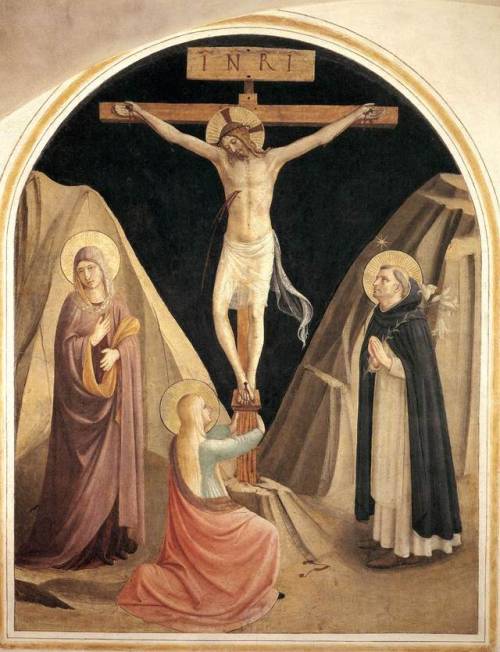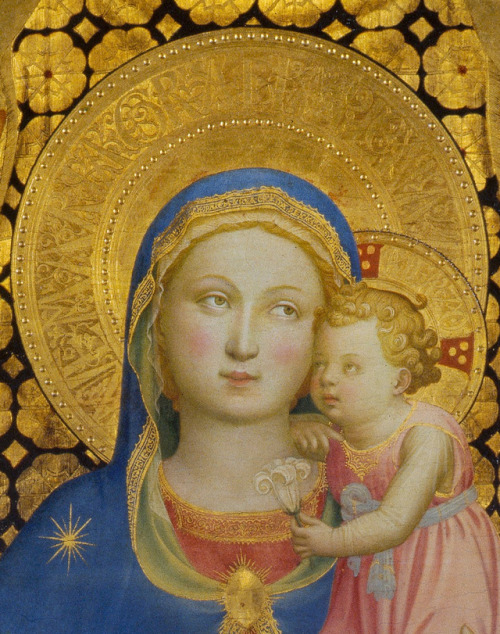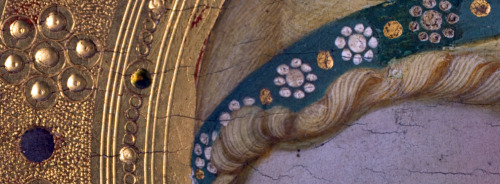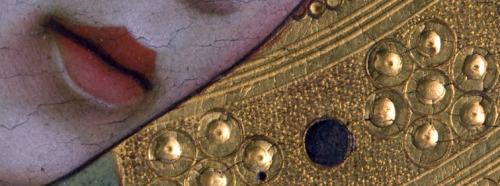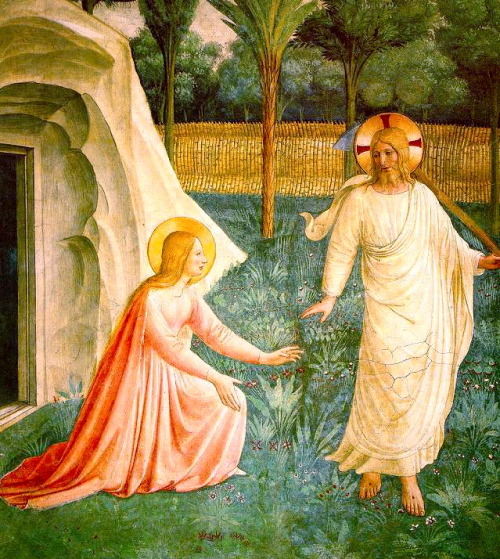#fra angelico
HOMILY for Fra Angelico
James 2:14-24. 26; Ps 111; Mark 8:34-9:1

The words of St James, his injunctions about care and love for the poor would have resonated in the heart and actions of today’s Dominican blessed. For although he is renowned as a painter and indeed is regarded as the patron saint of artists, Blessed John of Fiesole’s own epitaph, carved around his tomb in the church of Santa Maria sopra Minerva in the centre of Rome says: “When singing my praise, don’t liken my talents to those of Apelles. Say, rather, that, in the name of Christ, I gave all I had to the poor. The deeds that count on Earth are not the ones that count in Heaven. I, Giovanni, am the flower of Tuscany.” So, it is fitting on his feast day to remember that Blessed John did not want so much to be remembered for his artistic talents as for his charity, his love of the poor, his unseen deeds which honour Christ on earth in the poor and needy, and which thus redound to his glory in heaven. For as Christ warns in the Gospel today: “What gain, then, is it for a man to win the whole world and ruin his life?” No, it is better to strive for treasure and beauty in heaven through good deeds on earth, as St James says.
And yet this is a side of Blessed John that is often neglected: the aspects which account for his sanctity and his reputation in his lifetime that led to him being called Fra Angelico, the angelic friar. It’s often forgotten, even by Dominicans, that Blessed John was a pious layman and professional painter before he joined the Order; that he had joined a Confraternity that believed in physical asceticisms and discipline; that he was deeply influenced by the teachings and writings on social justice and economic reform advanced by the Dominican Archbishop of Florence, St Antoninus; and that in 1420 he joined the Observant branch of the Dominicans at Fiesole, who were engaged in acts of corporal mortification, severe fasting and asceticism, prayer and study by day and throughout the night, and a strong commitment to poverty. Fra Angelico would become the Prior of St Dominic’s Priory in Fiesole, a convent nestled in the secluded Tuscan hills near Florence, where he painted many altarpieces.
In 1439, St Antoninus, who was then Prior of St Mark’s in Florence, asked Fra Angelico to come to Florence and to paint frescoes of the Passion of Christ and of various Mysteries of the Rosary in the rooms of the friars. Whereas earlier theologians and ascetics had dismissed art and beauty as frivolous or a distraction from prayer and study, St Antoninus affirmed the importance of art in moving souls to devotion, and as an aid to prayer, focusing the mind on sacred things, and helping us to contemplate the higher things of God. Undoubtedly, St Antoninus’s view on sacred aesthetics was a great encouragement to Fra Angelico, and the beautiful convent of San Marco in Florence, which is now a museum of Fra Angelico’s art, is a testimony to the power of sacred art to inspire prayer and devotion. Hence, Dominican churches such as this one, which is full of sacred art especially in our Rosary Chapels, follow the insights of St Antoninus and Blessed John, which is that art and beauty lead us to contemplate divine mysteries with greater efficacy.
Thus many of the friars’ rooms in Florence are painted with images of the Cross and Passion of Christ, inviting them to meditate on the love of the suffering Christ. The words of today’s Gospel would have resonated in the minds of the friars who studied and prayed in those cells: “If anyone wants to be a follower of mine, let him renounce himself and take up his cross and follow me”. Indeed Fra Angelico painted many images of the Crucifixion with St Dominic or a friar clinging to the cross.
However, it is Fra Angelico’s depictions of Our Lady, especially his paintings of the Annunciation, which are probably his most luminous works. A divine light suffuses his paintings, which in their beauty and serenity are the fruit of Blessed John’s contemplation; they are painted sermons which endure and continue to inspire us long after the homilies of contemporary preachers have faded from memory. For as Pope St John Paul II said: “Angelico was reported to have said: ‘He who does Christ’s work must stay with Christ always.’ This motto earned him the epithet ‘Blessed Angelico,’ because of the perfect integrity of his life and the almost divine beauty of the images he painted.”
So today, as we honour Blessed John of Fiesole, we recall not only his art but also his words, his teaching, his inspirations, and the beauty of his life – beautiful because of its integrity and authenticity as a Dominican friar preacher; beautiful because he so closely followed and contemplated Christ and Our Lady; and beautiful because his life shone with good works. May he pray for us, that our lives may also reflect the beauty of holiness.
L'amour que les anges créent dans nos cœurs
« Le soir est une grande plaineOù les anges jouent aux billesAvec les étoiles. »— Maurice Carême, Poèmes de gosses
Le texte ci-dessous est l’extrait du livre Anges (ASIN: B00GOMZKIA), écrit par Clara Erskine Clement, publié par Parkstone…

The love that Angels create in our hearts
“When angels visit us, we do not hear the rustle of wings, nor feel the feathery touch of the breast of a dove; but we know their presence by the love they create in our hearts”
The text below is the excerpt of the book Angels (ASIN: B00IODLIWE), written by Clara Erskine Clement, published by Parkstone…



